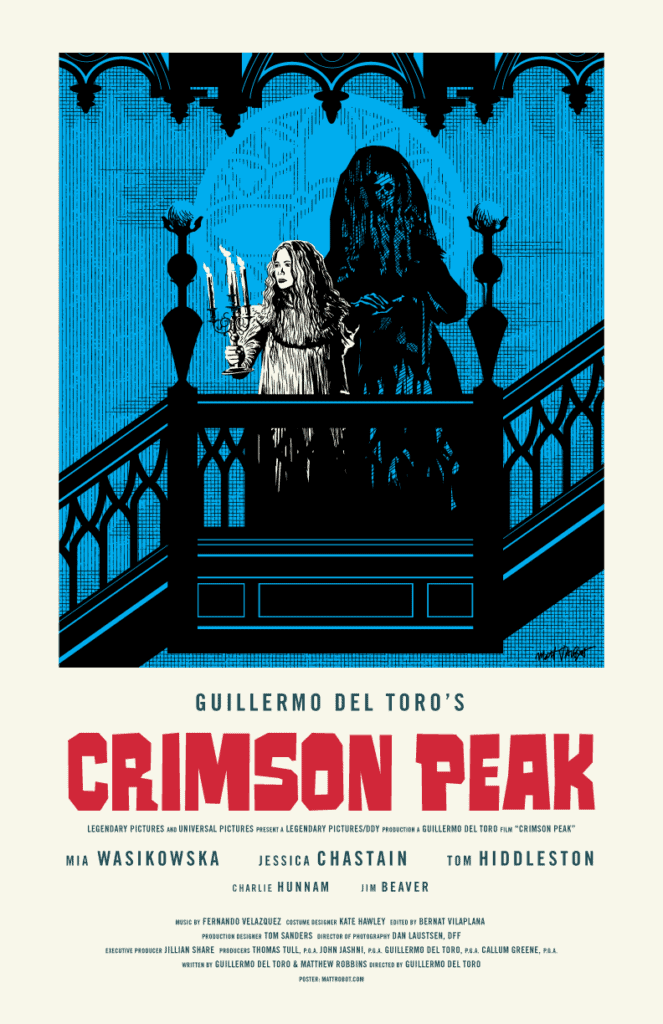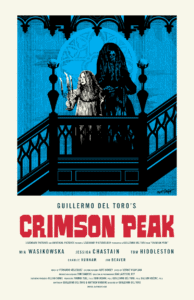
In Crimson Peak, composer Fernando Velasquez is tasked with scoring both a ghost-filled horror and an elegant gothic romance. Unfortunately, these two occasionally disparate palettes lead to an uneven experience.
The film follows Edith Cushing, an American heiress haunted by the ghost of her mother. Sir Thomas Sharp, an English baronet, sweeps her away to his decaying mansion amidst the hills of Cumberland. At the estate their romance continues, battered by ghastly specters and the hauntings of the past. In short, Crimson Peak is the rare modern gothic horror.
Velasquez’s score is strongest when the gothic elements are at the forefront. For instance, “Edith’s Theme” is the highlight, a recurring piano melody that’s both elegant and ominous. It manages to encapsulate the living fantasy Edith believes she inhabits as well as the ever-present danger she and her marriage face. Thomas’s sister Lucille often plays these piano parts in the decrepit heart of the mansion, their notes echoing through its rancid halls. They’re songs of love between brother and sister, of nostalgia for a lost past and optimism for a hopeful future.
Velasquez’s work in these moments is thoroughly impressive, not only because of how gorgeous the music is but also because of how many themes, plot points, and character relationships manifest within it. This exquisite, melancholic gothic romance is now quite uncommon, but Velasquez absolutely masters it.
However, not all of his score is as impressive. At times, the music falls back into more typical horror genre trappings, such as jump scare stingers that are now all too common. Though these moments are at least more interesting than in most other scores due to their organic, orchestral nature, they’re also obvious and expected. It helps break the immersion of the gothic setting, reminding us that we’re watching (and listening to) a modern rendition.



